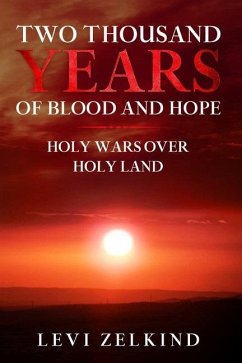This is a book about the Land of Israel, a tiny country that is hard even to find on a world map. Despite its size, this land has always been a focal point in world history and has attracted innumerable battles in the quest for global dominance. The present population of this country traces its origins from about 1800 BCE when a nomad called Abram moved here from present-day Iraq and made an eternal alliance with the Lord. His name was changed to Abraham, and the Lord promised him that his descendants would inherit this land forever and that they would change the course of history.This is how the Biblical history of Israel started. The area was called Canaan by its original inhabitants, who were almost identical to Abraham in their language and general culture but, unlike him, had remained polytheist. Abraham's sons, Isaak and Ishmael, and his twin grandsons, Jacob and Esau, are believed to be the forefathers of the two local peoples - the Jews and the Arabs. Four hundred years after Abraham, his descendants, who were already called Bnei Israel ("Sons of Israel", after the name Israel that had been given to Jacob), returned to this land from their Egyptian exile. They recaptured it from the heathen Canaanites and called their new home Eretz Israel ("the Land of Israel"). Over the course of the next 3,800 years, the country's name changed again several times. It was called Judea, Palestine, Outremer, the Holy Land, the Promised Land, and finally, the State of Israel and the Palestinian Authority. But its population, the descendants of Abraham, has always stayed more or less the same: the Jews and the Arabs.The issue is that this country - its geographical borders, its ethnicity, its religions, and even its enemies - has stayed largely the same for thousands of years. All of this creates a unique situation in which the history of the Holy Land endlessly repeats itself in a series of complex, overlapping circles. It is like a labyrinth, where you always come to the same wrong places until you find the proper path to the exit. For those who believe in the Lord, whether they call him Jesus, Allah, or simply God, the exit is marked with the sign of the Last Days or Armageddon. For non-believers, each new layer of history serves as the basis for the next spiral of repetition. Whose attitude is correct is not for us to decide. In either case, these recurring changes create a very strange and highly troubling picture.In this book, I present that picture through the prism of the region's military conflicts over the last 2,000 years. I've chosen to concentrate on such clashes because each of them has brought about a major turn in local history. By examining the accounts of these military conflicts, it is easier to understand the overall historical path of the country. New paths in the labyrinth of history will continue to be forged until an exit is found... or not. Who knows, maybe a real answer does exist to that eternal question from the old Arab about why everybody always fights for this place.

